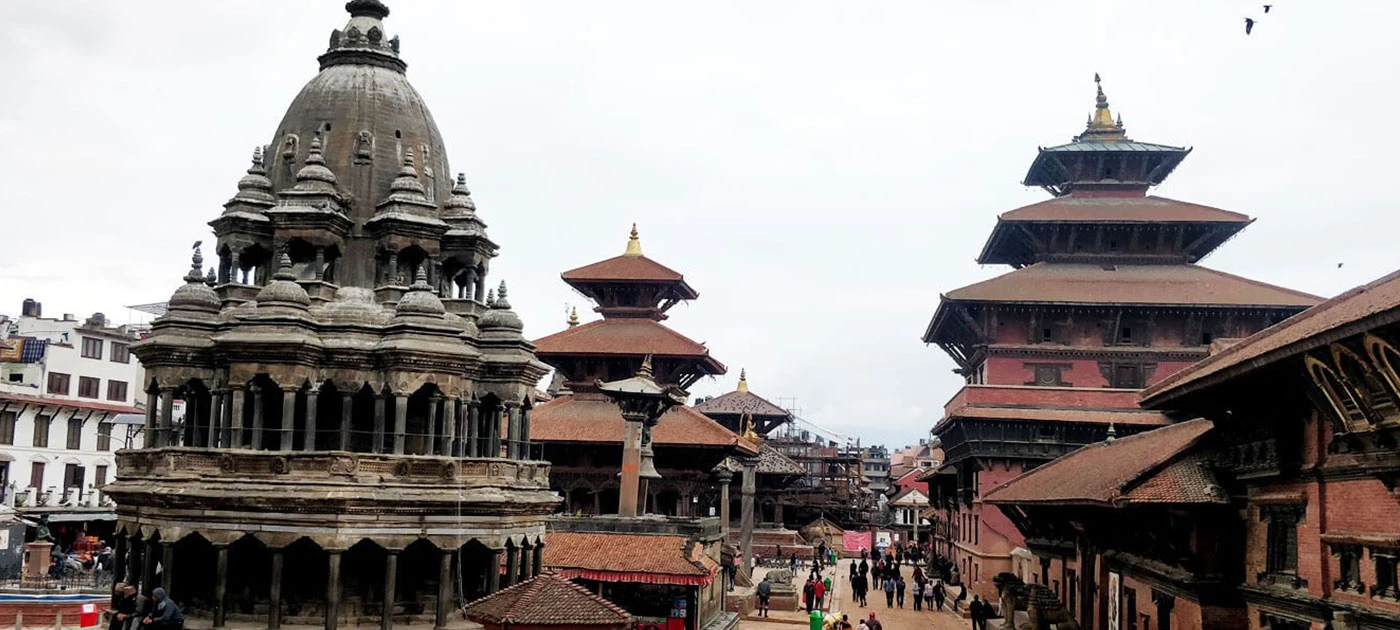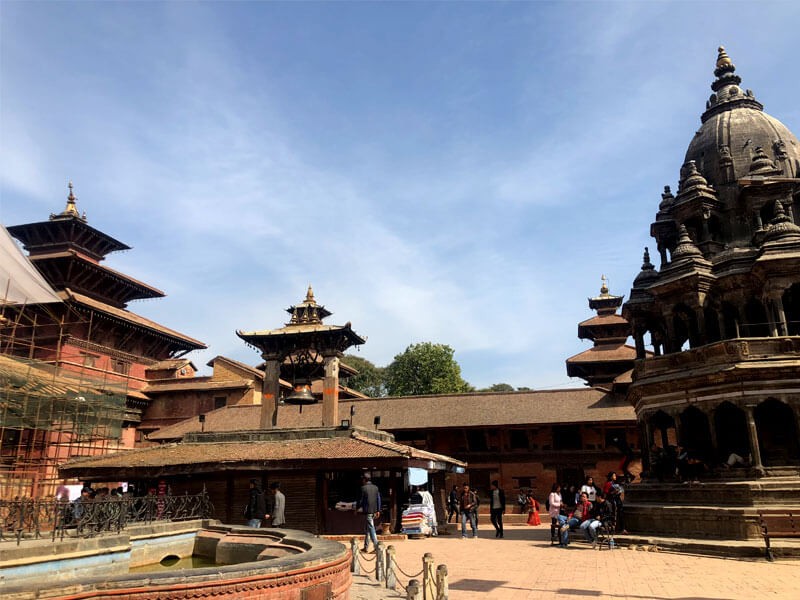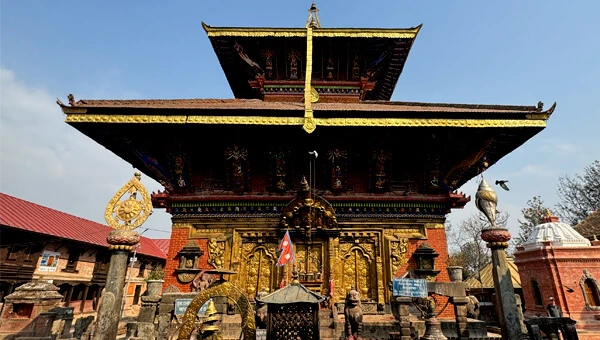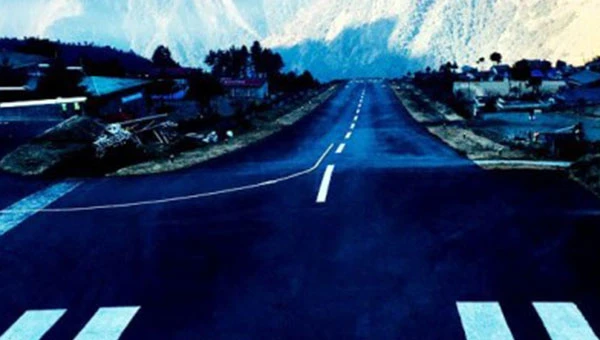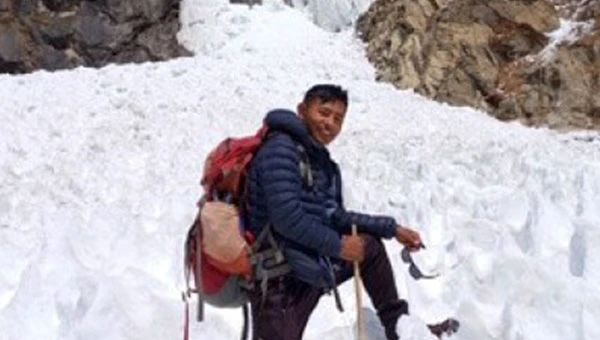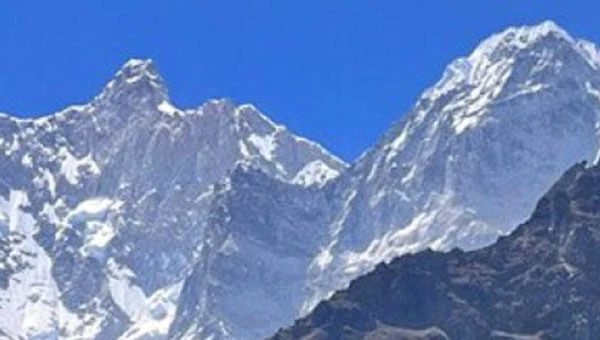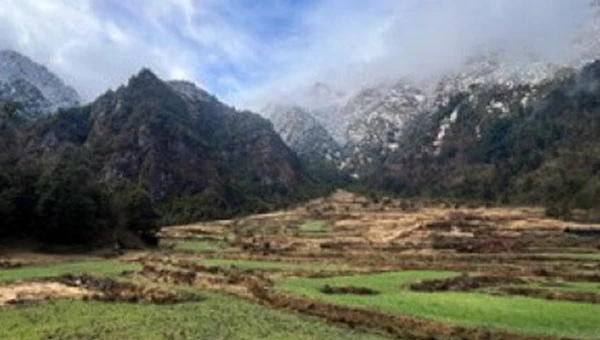Patan Durbar Square is another marvelous example of history and culture which has also a distinct place for the work in the field of arts and architecture. Patan Durbar Square offers myriad opportunities for visitors willing to study and research the artistic and architectural masterpieces, history, and culture of Lalitpur. The area is widely popular for woodcarving and especially metal crafts and you can hear the sounds of craftsman work on statuette or ornament. Additionally, Patan takes pride in producing great thangka and Pauba painters whose works are demanded in many countries. Patan Durbar Square is another Durbar Square located in Kathmandu Valley and listed as UNESCO World Heritage Site besides Kathmandu Durbar Square and Bhaktapur Durbar Square.
Patan Durbar Square
History, Legends, and Stories of Patan Durbar Square
The detailed history of Patan Durbar Square is lacking the evidence and conclusive information and existing inscriptions are in devotional languages of the past which are not understandable. This leads the history of Patan Durbar Square merely based on certain myths, stories, and words of legends creating different versions. Patan Durbar Square must have already been a center of royal people during the first millennium as testified on one of the stone inscription dated 643 AD in the main courtyard, Keshav Narayan Chowk, and another inscription of date 560 AD at Manidhara. Nevertheless, Malla Kings of Lalitpur is credited with the establishment of a royal square. Their assumptions that Paradhans and Thakuri Dynasty were involved in the creation before Malla but there is not enough proof to prove these assumptions. The crafts and information show that Malla Kings made the important upgrade and changes to square and the most current architecture are from the 1600s during the reign of King Siddhi Narsingh Malla.
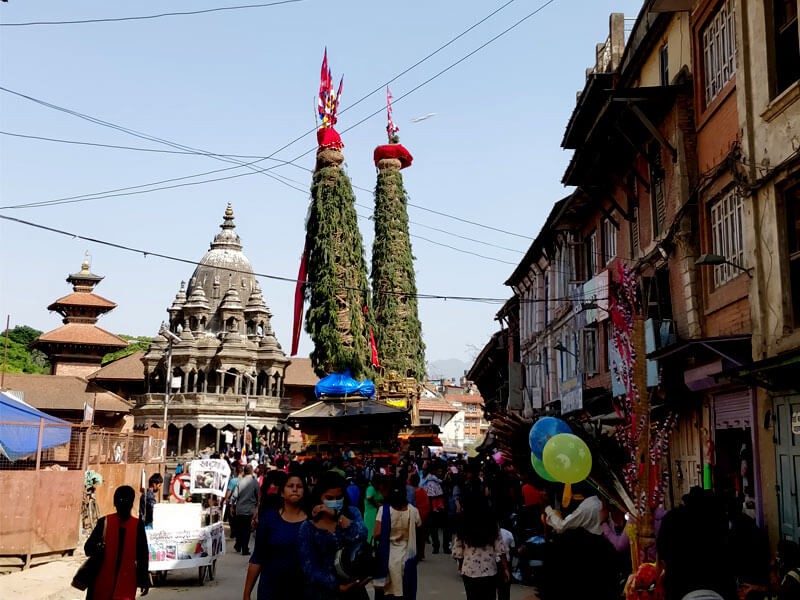
Another myth is related to the small river still underground as stormwater and sewer drain since Malla times. The Buddhist monastery was built on its bank where bright flame emerged from the water. In order to expand the palace area, the monastery was shifted to another space. It is believed that every year during a holy month of Gunla (Aug-Sept) a Buddha image is immersed in the consecrated water of a copper vessel placed in front of the Golden Door and worshipped faithfully by the locals.
Monuments and Temples of Patan Durbar Square
One and other myths and stories related to different monuments and temples of Patan Durbar Square which widely display the authentic art and craft of Nepal’s ancient time. Patan Durbar Square is full of Hindu temple, Buddhist monuments, bronze gateways, guardian deities and shrines noted for their exquisite carvings. Both Hindu and Buddhist elements are perfectly blended among the assets. The few attractive assets of Patan Durbar Square are briefly mentioned below though you need to have a guided tour of Patan Durbar Square to explore and enjoy the tiny to giant architecture and culture artifacts:
Patan Museum: Patan museum is one of the finest museums displaying a collection of works of arts from the ancient period. The museum is the former palace of King Siddhi Narsingh Malla and has King’s Throne of 17th century. Patan museum gives an excellent introduction to Nepal’s Hindu and Buddhist iconography, arts, craftsmanship along with the numerous stone, metal artifacts, paintings, and inscription dating back to the Lichhavi period.
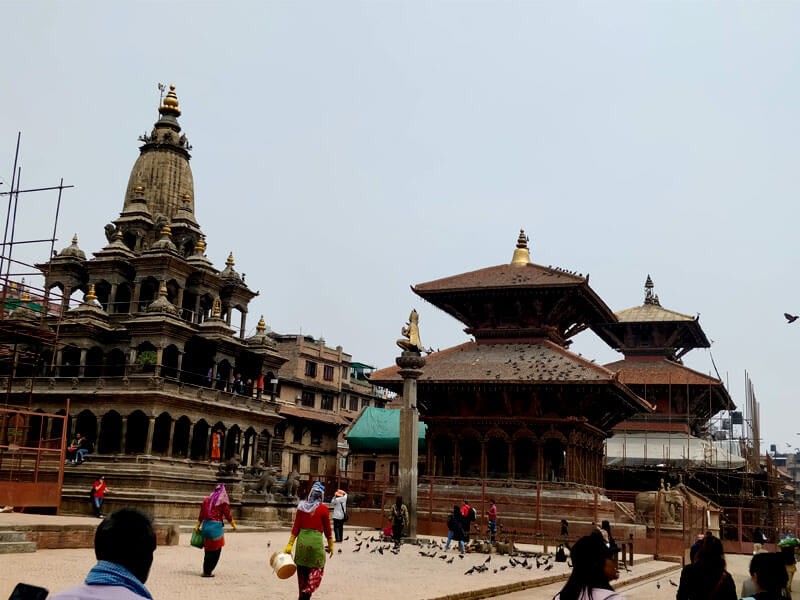
Hiranya Varna Mahavihar / The Golden Temple:
The Golden Temple is also named Hiranya Varna or Suwarna Mahavihar which is believed to be built in the 12th century. The Golden Temple has the statue of Shakyamuni Buddha where the entrance is guarded by two stone elephants and it has a copper-plated façade surrounded by a courtyard.
Krishna Temple:
Krishna Temple is a stone temple built in the Sikhara style which is unmatched for its finest craving in Lalitpur district. It is believed to be constructed by King Siddhi Narasingha Malla in the 17th century with 21 spires, enshrined of Lord Krishna, and said it took 7 years to be a complete temple. Lord Krishna is one of the avatars of Lord Vishnu so there are 10 different avatars of Vishnu surrounding. On the 1st floor, one can see carved images depicting Mahabharat and the 2nd floor has carvings reflecting Ramayana. There a statue of Garuda (mount of Vishnu) kneeling with fooled arms atop of a pillar facing the temple. Every year huge celebration and worshipping are done on the occasion of Krishna Ashtami (birthday of Lord Krishna) as well as during Jatras.
Bhimsen Temple:
Bhimsen is a brave and strong personality of Mahabharata and locals (Newa community) worshiped him as a god of trade and business. Bhimsen Temple is renowned for its three interconnected golden windows.
Mul Chowk:
Mul Chowk is the central, famous, and largest courtyard at Patan Durbar Square. Vidya Temple is located at its center and the Taleju temple stands around the courtyard. On the southern courtyard, the doorway to the Shrine of Taleju is confined by a statue of the goddess Ganga on a tortoise and goddess Jamuna on a carved Makura (Mythical crocodile).
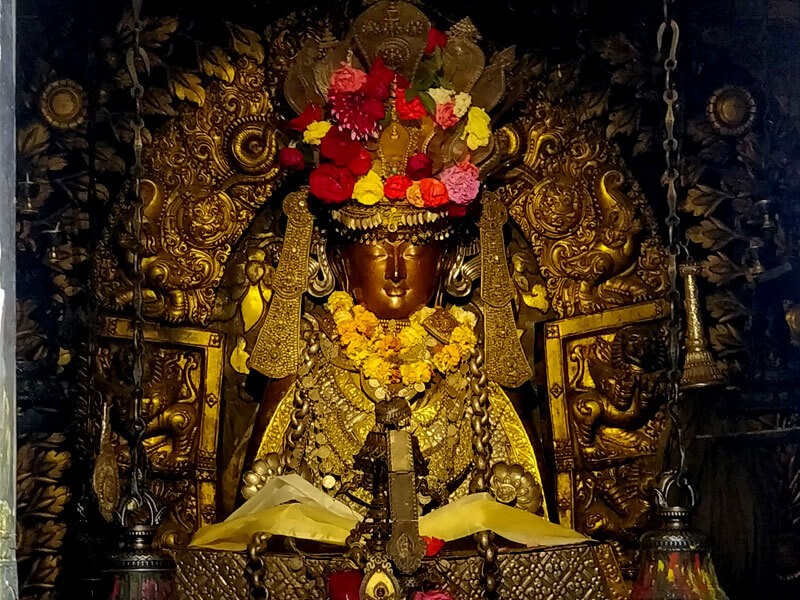
Sundari Chowk:
To the south of Mul Chowk, Sundari chowk is located having the sunken tank known as Tusha Hiti. The entrance is guarded by statues of gods: Hanuman, Ganesh, and Nara Singha (incarnation of Lord Vishnu). This chowk takes you to the world of hot and spicy Newari Cuisine (Choila, Kachila, Yomari, beaten rice, fried beans, vegetables) along with local rice wine named as Chhyang.
Similarly, there are other temples and shrines at Patan Durbar Square; Taleju Bhawani Temple, Vishwanath Temple, Mahabouddha Temple, Rudra Varna Mahavihar, Red Machhindranath Temple, Ashoka Stupa, Banglamukhi Area, which you can explore while visiting Patan Durbar Square. The Durbar Square of Kathmandu Valley is a wholesome treat of ancient temples and monuments which leave visitors being spellbound and result in worthy moments.
If you are planning for a Nepal visit make sure you do not miss exploring and observe UNESCO World Heritage Sites located in Kathmandu Valley as it is easier for you to travel. You can book a tour package Kathmandu Valley Tour 2 Days: Explore UNESCO World Heritage Sites at travel and tour companies of Nepal like Nepal Adventure Team. Nepal Adventure Team has experienced a guide that leaves no stone unturned to please travelers with the information, importance, and mythology related to those World Heritage Sites. You can customize your tour as per your flexibility and comfort. If you are physically active and interested in adventure, you can also enjoy the “ Kathmandu Valley Cycling Tour: Cycling to UNESCO World Heritage Site”.
Entrance Fees:
- SAARC Nationals: NPR 250
- Chinese Nationality: NPR 1000
- Foreign Nationals: NPR 1000
- Nepalese Nationality: Free (Entry fees for Nepalese are applicable only for Patan Museum: Students with a letter from school: NPR 10; Student Card Discount: NPR20; Others: NPR30)
Personal Tips
- Carry personal ID certificates (passports).
- It is better to carry a few cash while touring in Nepal.
- “Namaste” is widely practiced in Nepal so you can use Namaste instead of hello/hi to begin any conversation. Nepalese adore the foreigners using Namaste.
- If you lose your group/ tour guide, you can communicate with tourist police residing in every touristic area.
- Most of the Nepalese know the English language, so you can easily communicate with locals.
Do’s and Don’ts at Patan Durbar Square
- According to local custom, you can get into temples and holy places after taking off your shoes.
- Don’t bring anything with furs, leather products inside the temples.
- Watch the notice for photography and do not take photos of temples/statue without permission. At some of the places you may not take your cameras and the authority will return your camera after your visit to the concerned area/temples/monument.
- Do not wear a hat/ cap inside holy places as a temple or while praying to gods in Nepal.
- Nepalese lit fire and incense which they regard as holy and religious so value it while visiting and do not litter at those areas. If you face allergy or difficulty due to the aroma of incense, you can use a mask to cover your nose and mouth.
- Do not touch any elements/assets with feet or stretch your feet towards them.
